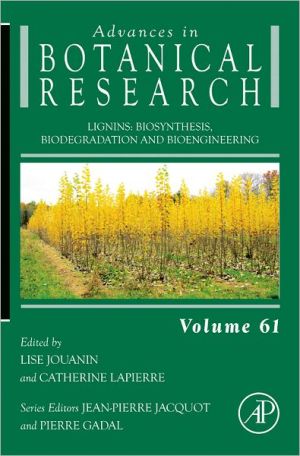

 |

|

Sold Out
Book Categories |
1. Field Trials with Lignin-Modified Transgenic Trees
2. Lignification and Lignin Manipulations in Conifers
3. Molecular Biology of Lignification in Grasses
4. Cytochrome P450s in Lignin Biosynthesis
5. What Role for Plant Laccases in Lignin Polymerization?
6. Transcriptional Regulation of the Lignin Biosynthetic Pathway Revisited: New Players and Insights
7. Lignins and Abiotic Stresses
8. Fungal Strategies for Lignin Degradation
9. Evolutionary History of Lignins
Login|Complaints|Blog|Games|Digital Media|Souls|Obituary|Contact Us|FAQ
CAN'T FIND WHAT YOU'RE LOOKING FOR? CLICK HERE!!! X
 You must be logged in to add to WishlistX
 This item is in your Wish ListX
 This item is in your CollectionLignins: Biosynthesis, Biodegradation and Bioengineering
X
 This Item is in Your InventoryLignins: Biosynthesis, Biodegradation and Bioengineering
X
 You must be logged in to review the productsX
 X
 X

Add Lignins: Biosynthesis, Biodegradation and Bioengineering, Lignins are Nature's aromatic polymers and are the second most abundant organic constituents of the biosphere, next to cellulose. Lignification mainly occurs in the walls of terrestrial vascular plants, mainly in the secondarily thickened cells of support, Lignins: Biosynthesis, Biodegradation and Bioengineering to the inventory that you are selling on WonderClubX
 X

Add Lignins: Biosynthesis, Biodegradation and Bioengineering, Lignins are Nature's aromatic polymers and are the second most abundant organic constituents of the biosphere, next to cellulose. Lignification mainly occurs in the walls of terrestrial vascular plants, mainly in the secondarily thickened cells of support, Lignins: Biosynthesis, Biodegradation and Bioengineering to your collection on WonderClub |